People live in the cities to lead comfortable lives, away from the challenges of nature. Yet, cities have turned into places of challenges too. Traffic, air pollution, stressful people…
It’s high time to remember that better living is possible; you don’t have to breathe car exhaust, eat unhealthy food and lead a stressful life. The good news is that some cities have proved living in a city healthily and happily is possible. One of them is this year’s leader in renewable energy production, Lisbon.
Let’s look at some of the reasons why people are choosing this part of the Iberian Peninsula to travel this year:
Lisbon, the Portuguese capital, has won the title, European Green Capital Award for 2020.
More than 30 cities were running for the title including Prato (Italy), Reykjavik (Iceland), Seville (Spain), Tallinn (Estonia) and Wrocław (Poland), Bursa (Turkey), Ostrava (Czech Republic), Aberdeen (UK), Budapest (Hungary). Lisbon (Portugal), Ghent (Belgium) and Lahti (Finland) were the finalists at the Awards at Nijmegen, Netherlands-the current European Green Capital. In the end, this prestigious title, presented by EU Commissioner for Environment, Maritime Affairs and Fisheries, Karmenu Vella, was awarded to Lisbon. The jury regarded Lisbon as a role-model for combining economic growth and sustainability.
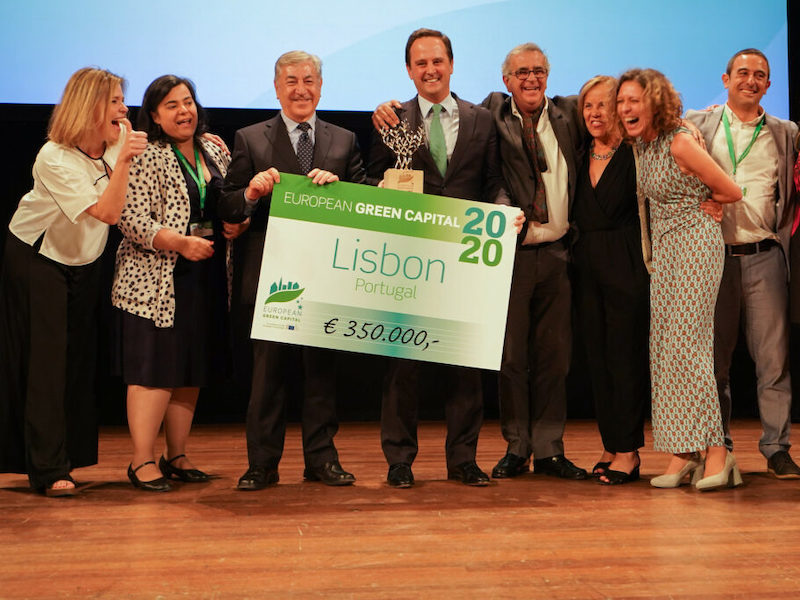
Commissioner Vella said: “Climate change, overconsumption, plastic waste and biodiversity loss are major threats to our cities and our future. It is heartening and inspiring to see such strong leadership from Lisbon, and other European Green Capital winners.”
What’s Lisbon’s secret for improving the quality of life of citizens and tourists?
More Bikes, Fewer Cars
Lisbon has restricted car use and prioritise public transport, cycling and walking. It has one of the world’s largest networks of electric vehicle charging points with 516 points citywide. To encourage cycling in the hillier areas of the city, Lisbon has launched a bike-sharing scheme with electric bikes in 2017.

One of the best ways of discovering Lisbon is to take the historic #28 tram between Martim Moniz and Campo do Orique. It takes you to the most interesting spots of Lisbon’s historical, architectural heritage and also to the popular tourist districts of Graca, Alfama, Baixa and Estrela. You can also take #12 tram for a shorter journey. This tram loops around the heart of the old town in around 20 minutes, going past the cathedral, St. Anthony Church and breath-taking Santa Luzia viewpoint and more. In short, taking a tram is cheap and nostalgic.
Renting a bike to go around the streets is another eco-friendly option. Tagus River Waterfront Bike Lane’s scenery is perfect to ride along and enjoy the views of the ocean. You can jump on a hop-on-hop-off cruise from Terreiro do Paço or Cacilhas de Belém as well to see Lisbon’s colourful cityscape. A great idea to spend your day clicking beautiful pictures from a new perspective of the city from the water.
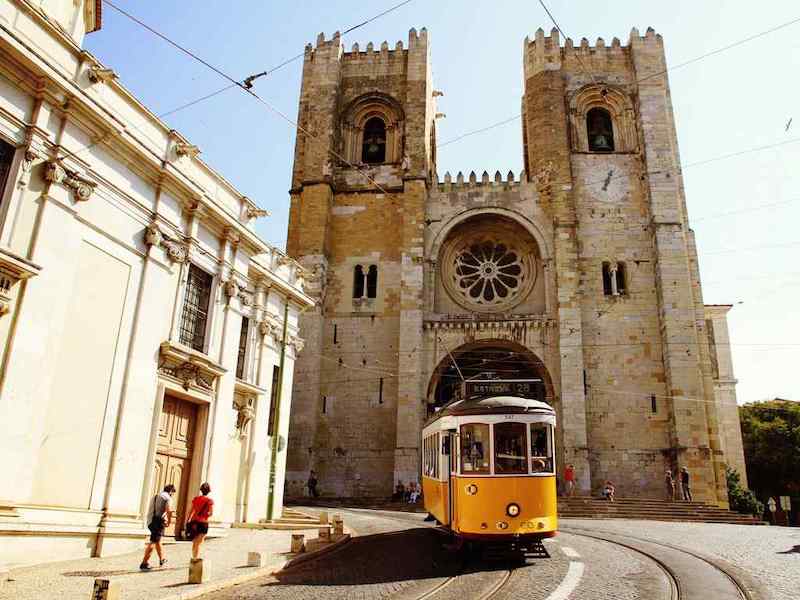
If biking is not your thing, you can discover Lisbon at your own pace by simply walking in its cobblestone streets to witness the daily life of the locals. If you take the walking route from Cais do Sodré to Torre de Belém, you can see Tagus River, Museu Nacional de Arte Antiga, Alcântara Docks, Ponte 25 de Abril, MAAT, Padrão dos Descobrimentos, Torre de Belém on the way. Would you like to take some postcard-perfect shots of Lisbon with its beautiful blue and white tiles, terracotta rooftops and medieval streets? If your answer is yes, then take Alfama Route so that you can see Campo das Cebolas, Museu do Fado, Miradouro das Portas do Sol, Miradouro de Santa Luzia, Museu do Aljube, Sé de Lisboa (Old Cathedral) along the way.
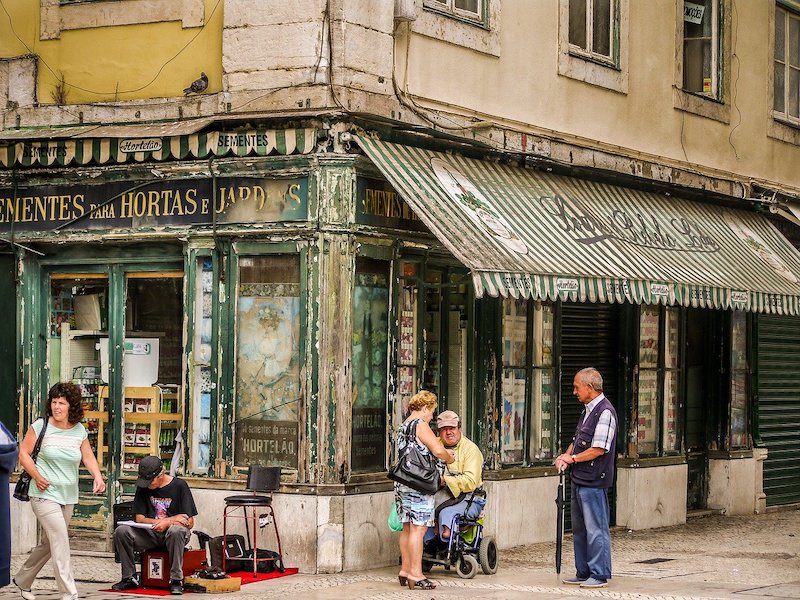
Sustainable Land Use
The greener the happier! Don’t we all like taking a stroll along the park to refresh and relax? Monsanto Park has received the Sustainable Forest Management Certification and it is the place to spend quality time in Lisbon. Why not grab a book and go to Jardim da Estrela and read among a variety of exotic plants and trees? Another option is Jardim do Torel, this park is a hidden gem with a beautiful view where you can relax and watch the city from above.
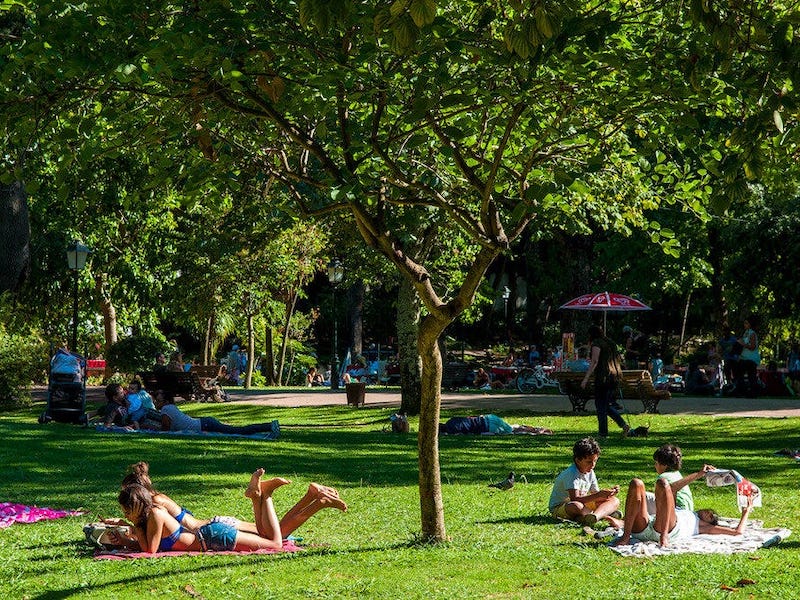
Lisbon has focused on enhancing its natural areas and providing more outdoor recreational space for its residents. This way the city can also be protected from the effects of climate change, such as drought and extreme heat. There are many projects Lisbon is working on to enhance the quality of life in the city. One of them is the green corridor project which aims to link up the city’s natural amenities, such as Monsanto Park and the Tagus River with walkways and cycle paths. This way new green space will be created to protect the wildlife and its biodiversity.
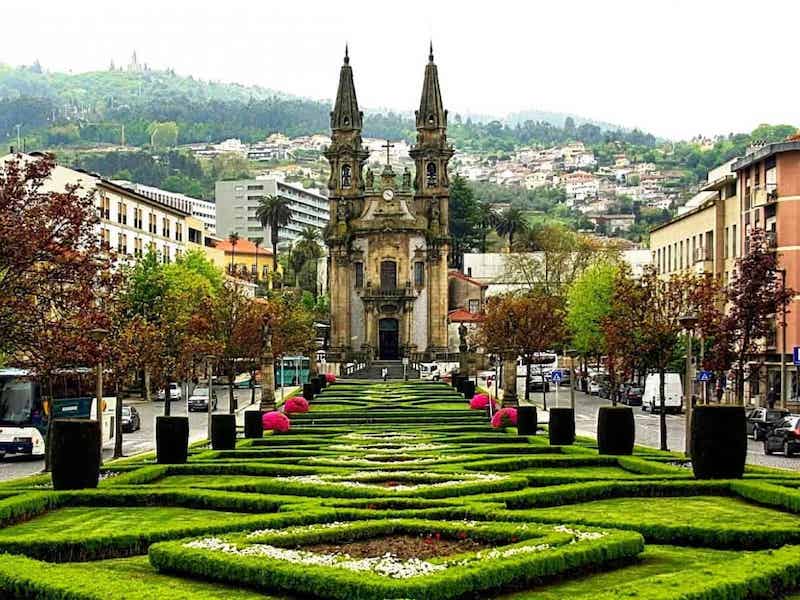
Making green areas improve existing grey infrastructure. Planting more trees in the streets help to reduce the traffic, giving pedestrians and cyclists more space. It also helps reducing air pollution, making a city more attractive and livable.
Flea Markets and Recycle Existing Items
“We can help educate our families and communities about the importance of recycling for our environment, and how each of us can make a difference for a better world by recycling.”
(Robert Alan Silverstein)
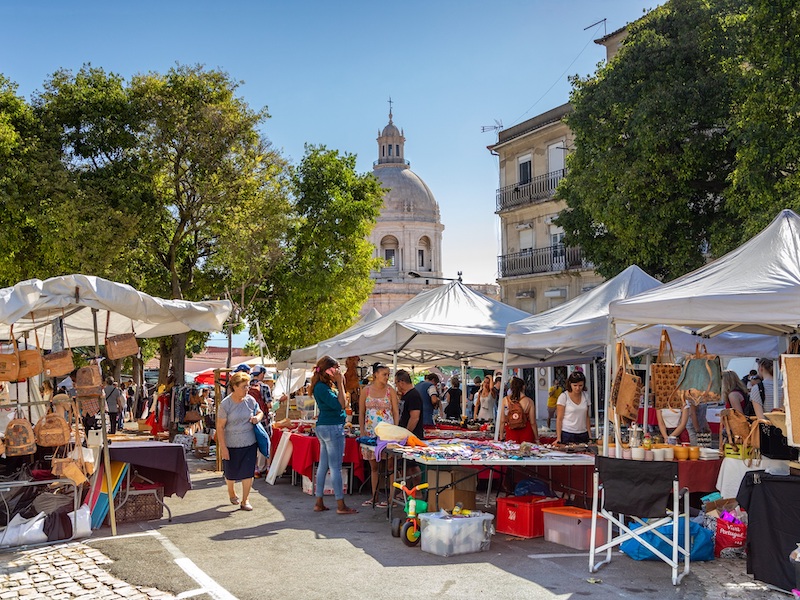
Flea markets are where you can touch the heart of the city and its history. These are playgrounds for many curious locals and tourists alike. Lisbon’s flea market is called “Feira da Ladra” meaning “Thieves’ Market”. Do not worry, it is all legal and it offers everything from antiques to unexpected treasures, furniture, hand-made artisan goods, old books, clothes and even coins. The market is held every Tuesday and Saturday, from dawn to early afternoon. For an authentic Lisbon experience, you should stop at Feira da Ladra.
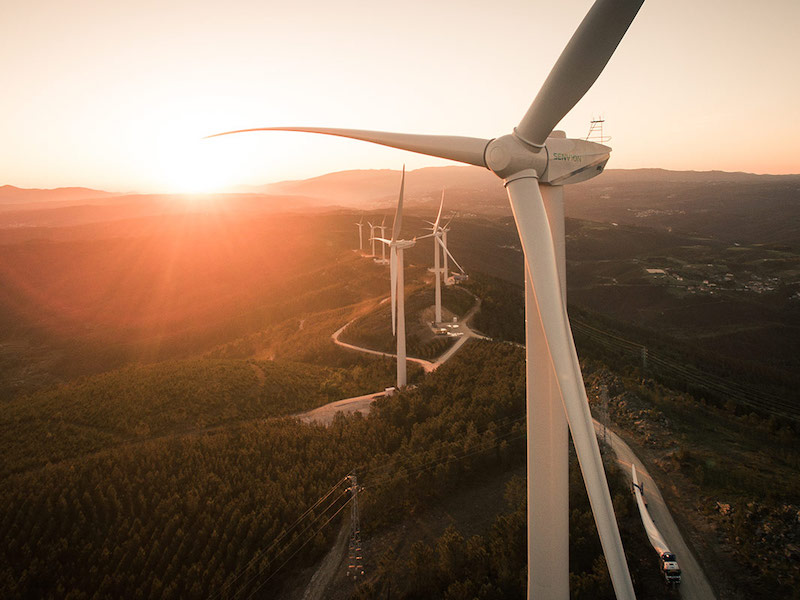
You can see wind turbines and hydroelectricity stations while travelling around the country. Last year, Portugal produced more than enough renewable energy to meet the country’s entire electrical demand. 55% of that energy was produced through hydropower, while 42% came from wind. In Portugal, renewables are expected to represent 80% of electricity consumption by 2030.
In Tras-os-Montes, Minho, you can find the wind turbines and take selfies with them. One of the biggest hydroelectricity stations is the Venda Nova station located by the Alto Rabagão Dam in Peneda-Gerês National Park.

Besides its beautiful beaches, delicious wine, cute and colourful streets, year-round sun, renewable energy is just one more reason to love this beautiful country. Book your flight at earliest to have quality time in this world-famous sustainable city, the green capital of 2020.